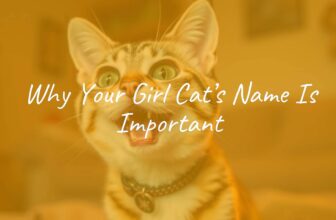
Have you ever wondered what your cat is trying to say with its tail? A cat’s tail is like a signal-it tells you how your cat feels, what it wants, and sometimes if it is healthy or in pain. While cats often use quiet sounds or facial movements to talk to us, the tail is usually the easiest way to know what they’re feeling. Learning to understand your cat’s tail can help you get closer to your pet and make your relationship stronger and more open.

Cats use their tails as one of their main ways to “talk.” The way a cat holds or moves its tail can tell you a lot about their confidence, fear, friendliness, or discomfort. If you watch the tail closely, you will notice how your cat’s mood changes. Responding the right way to these signals makes both you and your cat feel more comfortable at home.
What Do Cat Tail Positions Mean?
Cat tail meanings are the messages shown by how a cat holds, moves, or fluffs up its tail. The tail is an important part of cat body language and works together with the way they hold their head, move their ears, or position their eyes. Knowing what your cat’s tail is saying can help you care for your cat, because you’ll spot when they are happy, stressed, or even hurt.
Why Understand Cat Tail Language?
Learning what a cat’s tail means is like learning a new way to talk with your pet. It’s more than just happy or sad; some tail signs reveal if your cat is curious, stressed, excited, or uneasy. By noticing these clues, you can figure out what makes your cat comfortable or scared and change things to help. You’ll also be able to catch signs of sickness or pain early, as cats might change their tail position when they don’t feel well. Understanding these messages turns guessing into knowing, making life better for both of you.

How Do Cats Use Their Tails to Communicate?
The cat’s tail is a flexible, strong part of their body full of bones and muscles, which allows many different shapes and movements. Cats use their tails not just for balance when walking or jumping, but also to show exactly how they are feeling at the moment. The tail can warn about danger, signal playtime, or ask for affection. It also helps cats keep their balance and, in cold weather, cats might wrap their tail around themselves to keep warm. But the main way tails help at home is by showing how your cat feels and what it wants from you.
Common Myths About Cat Tails
Some people think a wagging cat tail always means happiness, just like a dog’s tail. But for cats, a fast, hard tail whip usually means they are annoyed or angry, not pleased. Another myth is that every tail signal always means the same thing. In truth, you need to look at what’s happening around the cat too. For example, a tail sticking straight up could mean your cat is excited or worried, depending on what else is going on.
Also, the cat’s tail is very sensitive, and most cats do not like their tails being grabbed, pulled, or touched roughly. A cat’s tail is full of nerves and can easily get hurt by rough handling, so always treat it gently.

Cat Tail Positions and What They Mean
Just like facial expressions in people, tail positions in cats tell a story. Here’s a look at some common tail positions and what they usually mean:
| Tail Position | Meaning |
|---|---|
| Straight Up | Confidence and friendliness. Most often, this is your cat’s way of saying hello. If the tail is quivering, your cat is extra happy or excited. |
| Curved Like a Question Mark | Your cat is happy and wants to play. The slight curve at the top is a good sign your cat feels social and open. |
| Held Low | Shows fear, worry, or discomfort. Your cat is trying to be small or careful. |
| Tucked Under the Body | Indicates strong fear, pain, or wanting to hide. The closer the tail is under them, the more scared or unwell the cat may be feeling. |
| Puffed-Up | This is a reaction to a scare or feeling threatened-the classic “Halloween cat.” Your cat is trying to look bigger to protect itself. |
| Tail Wrapped Around Body | Often signals unease, not feeling well, or wanting to be left alone. Sometimes it’s just a way to stay warm, but if it’s frequent, check for stress or illness. |
| Tail Wrapped Around Person or Another Cat | Shows affection and trust-a social “hug” or handshake. It’s a sign your cat feels close to you or the other cat. |
| Flat or Lying to the Side | Usually means your cat is relaxed, but if the rest of their body looks stiff or their eyes are narrowed, they might be uneasy. |
Cat Tail Movements and What They Show
It’s not just the tail position that matters, but also how a cat moves its tail. Here are some of the most common tail movements and what they often mean:
- Flicking Tip: Quick movements at the tip can mean focus (like during play or hunting), but if not playing, it can mean irritation.
- Swishing or Thrashing: Big side-to-side moves show anger, annoyance, or warning. When cats do this, it’s their way of asking to be left alone.
- Twitching Tip: May show mild annoyance, or high focus when your cat is watching potential prey.
- Quivering Tail: A trembling upright tail usually means excitement or joy, but sometimes can mean your cat is marking territory, especially against surfaces.
- Slow, Gentle Swishing: A calm, focused cat may gently wave its tail-often before pouncing during play.
- Rapid, Vigorous Tail Movement: Quick, strong tail movements or thumping on the floor are clear signals of distress or anger and mean your cat needs space.

Specific Tail Behaviors and Their Meanings
- Relaxed or Happy Cat: Look for a straight-up or question mark tail, gentle swishing, and a relaxed posture along with soft eyes and slow blinks.
- Scared, Angry, or Stressed Cat: Tail tightly tucked, puffed up, or thrashing hard. Often paired with wide eyes, ears flat back, and tense body.
- Curious or Playful Cat: An upright, slightly curved tail, tip twitching, and body low to the ground, ready to pounce. You’ll also notice the cat’s ears forward and focused eyes.
Why Do Cats Wrap Their Tails Around You?
When your cat curls its tail around your leg or arm, it means they like you and trust you. This is their way of showing affection, almost like a gentle hug. Cats might also do this to mark you with their scent, showing you are part of their “family” or group.
It’s both a loving gesture and a subtle way of claiming you as someone special to them. When you notice this, you can feel good about the bond you and your cat share.

What Can Affect Cat Tail Signals?
- Personality: Outgoing cats may hold their tails high more often. Shy cats may keep tails lower or close to the body.
- Breed and Tail Type: Some breeds have fluffier tails, which can make their signals seem bigger. Some cats, like the Manx, naturally have no tail or only a short one. These cats “speak” more with the rest of their body.
- Whole Body Language and Environment: Always look at the cat’s ears, eyes, and how they’re holding themselves – and think about if something new, loud, or strange is happening nearby.
Tips for Reading Cat Tail Language
You can get better at “talking” with your cat by:
- Always looking at the full body, not just the tail, to understand what your cat is feeling.
- Noticing what is happening around your cat. Are there changes, noises, or strangers around?
- Responding in the right way: Give attention or play when your cat welcomes you with a friendly tail, but give space when the tail is low, thrashing, or puffed up.
Recognizing and using these clues will help you make your cat feel safe, loved, and understood. The closer you pay attention to their body language, the easier it will be to know what your cat is telling you.






